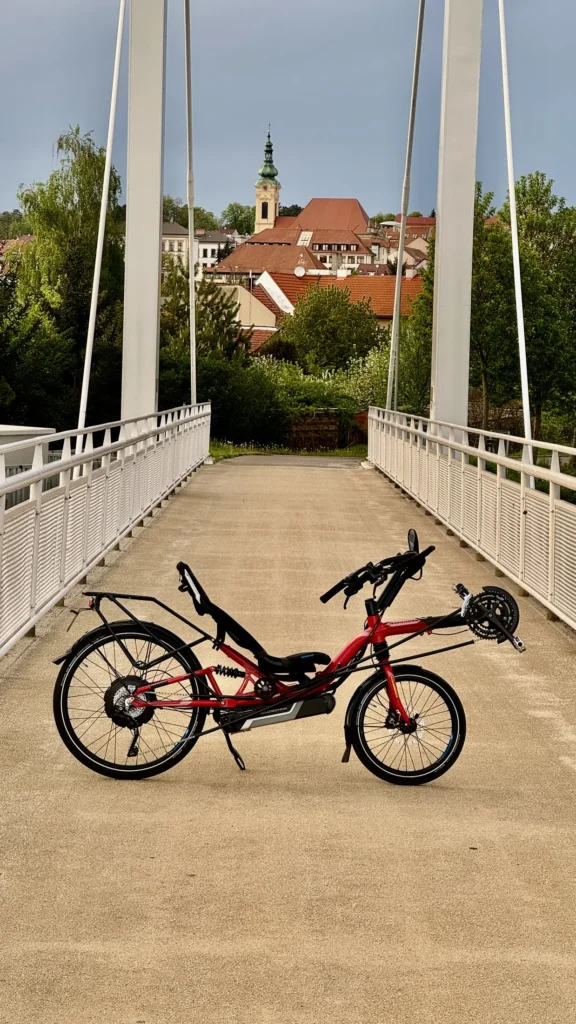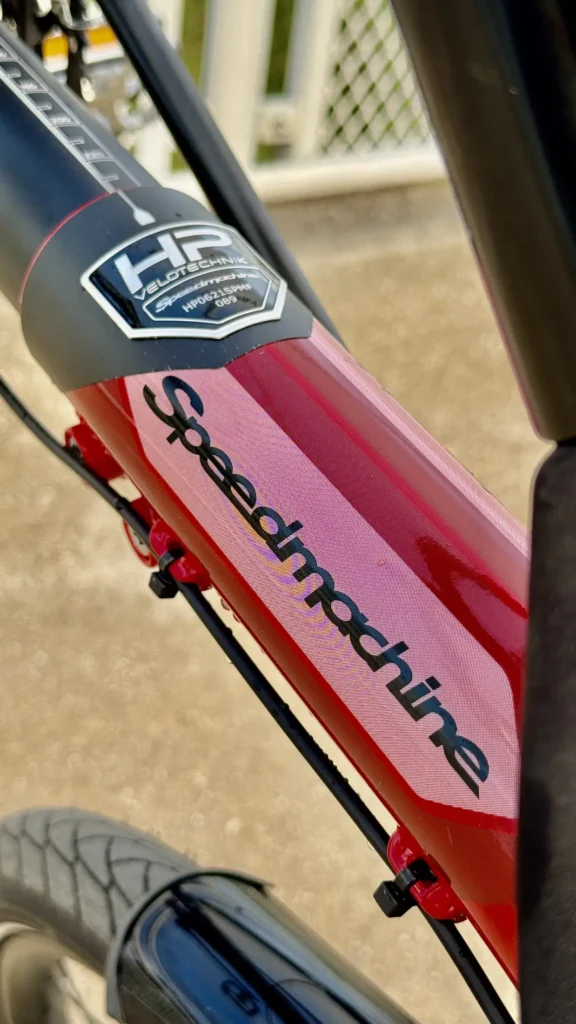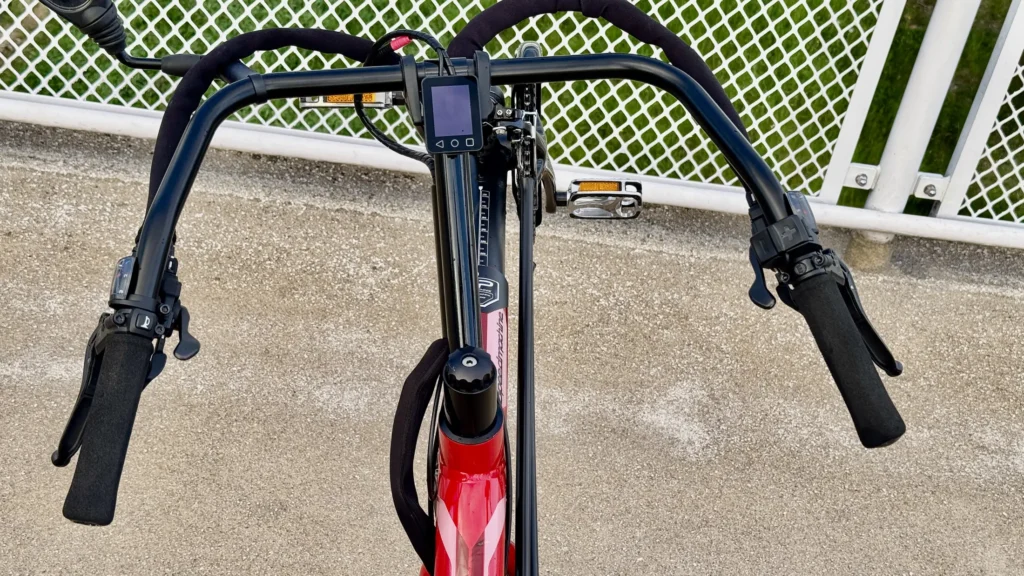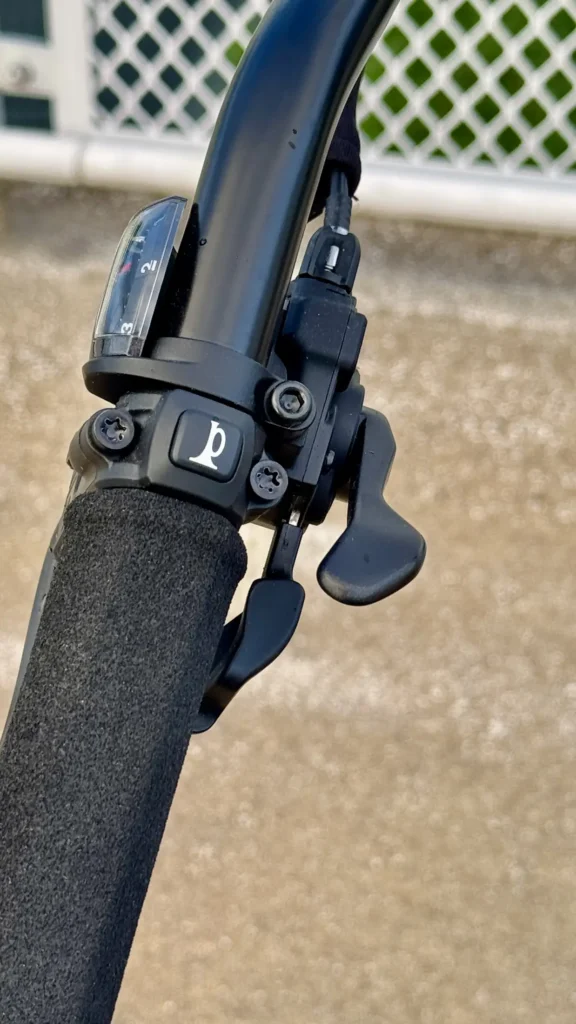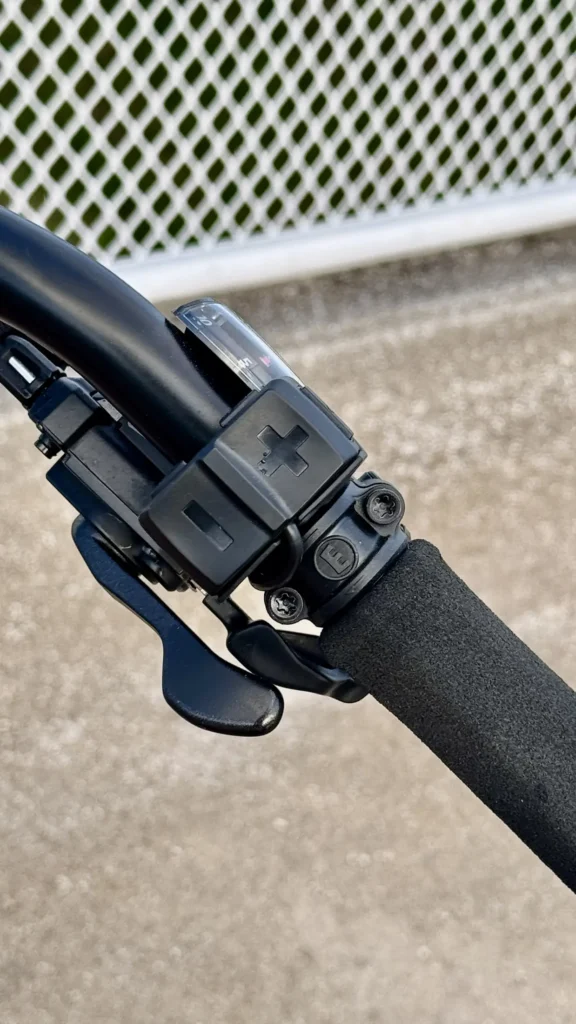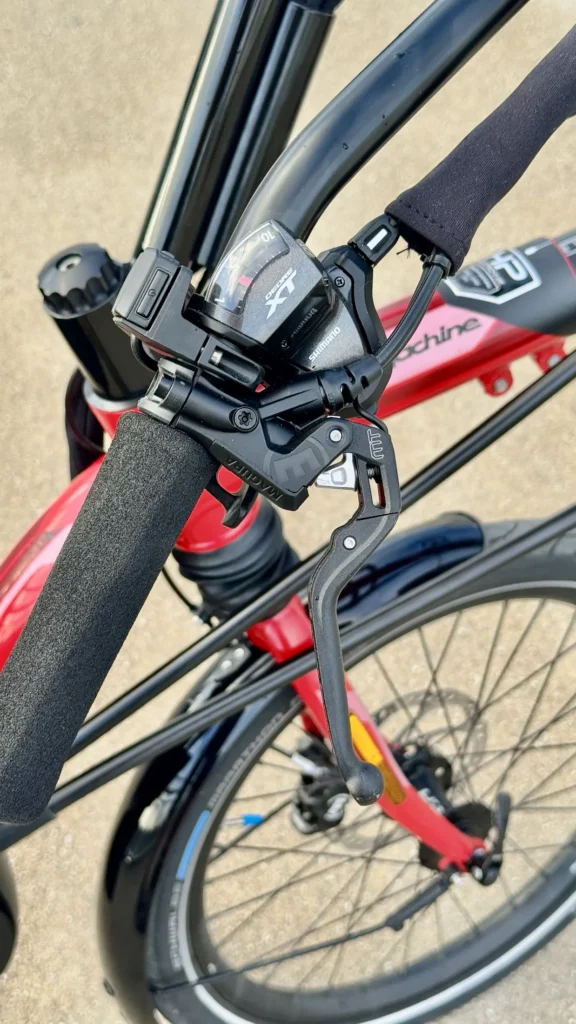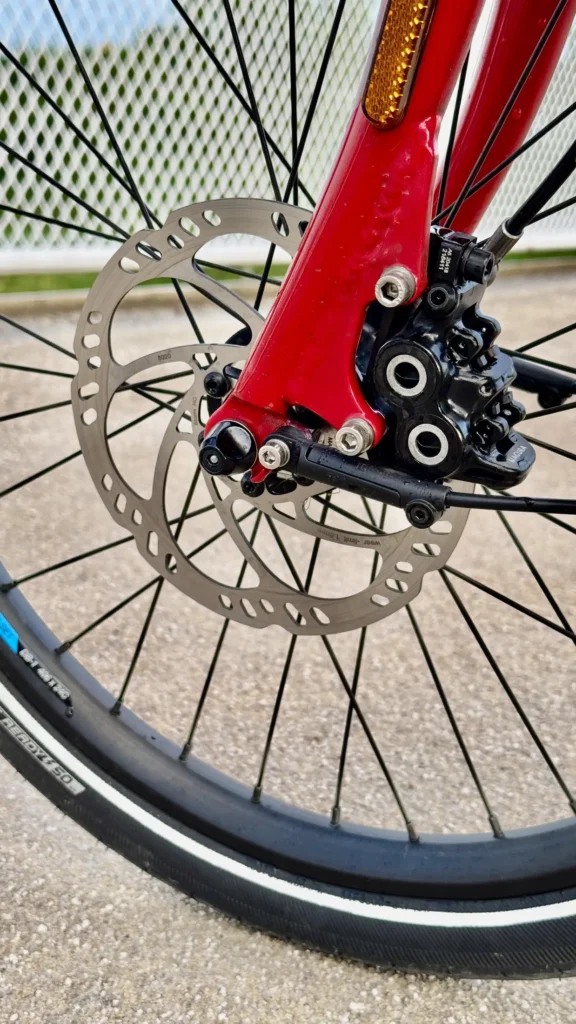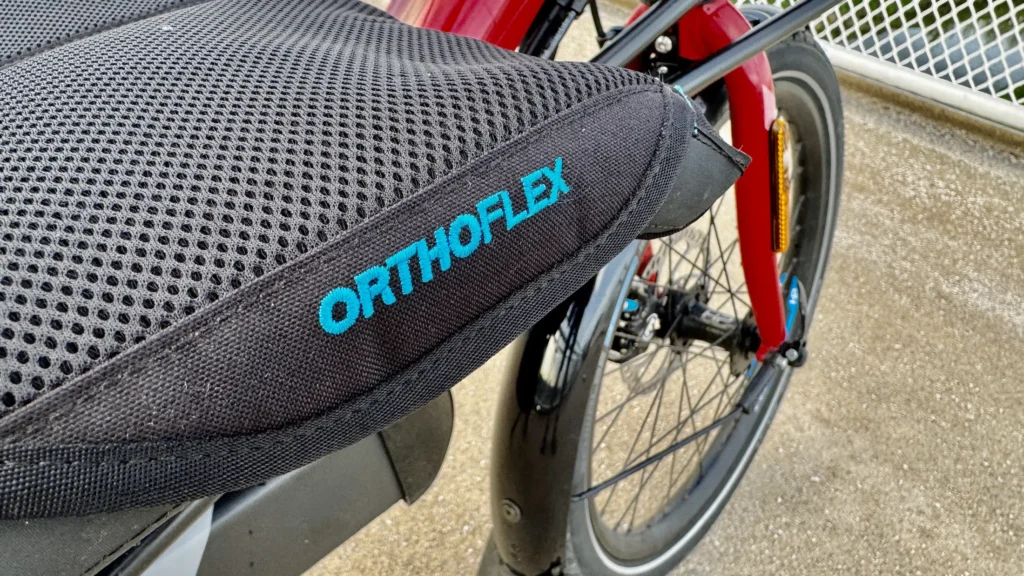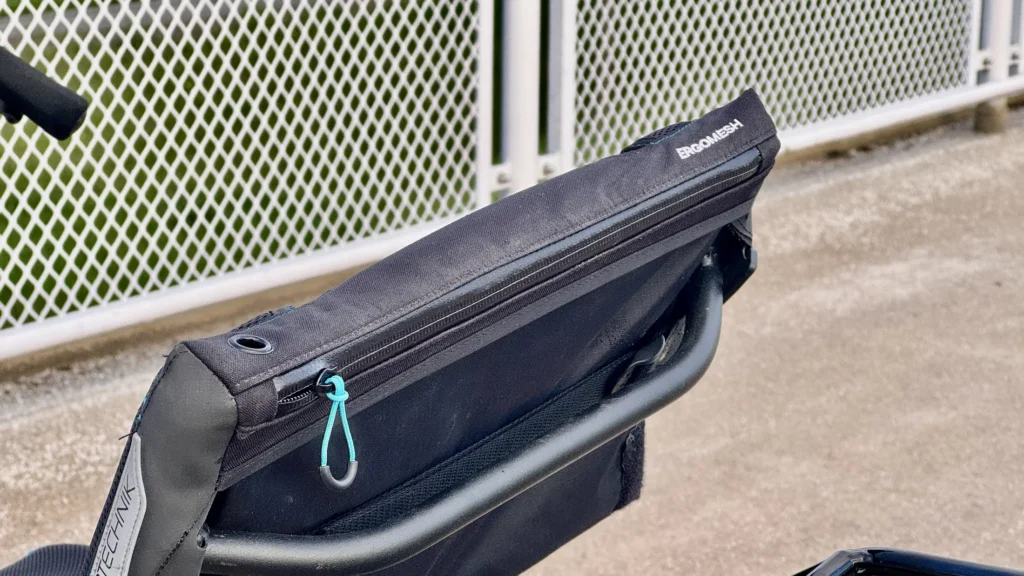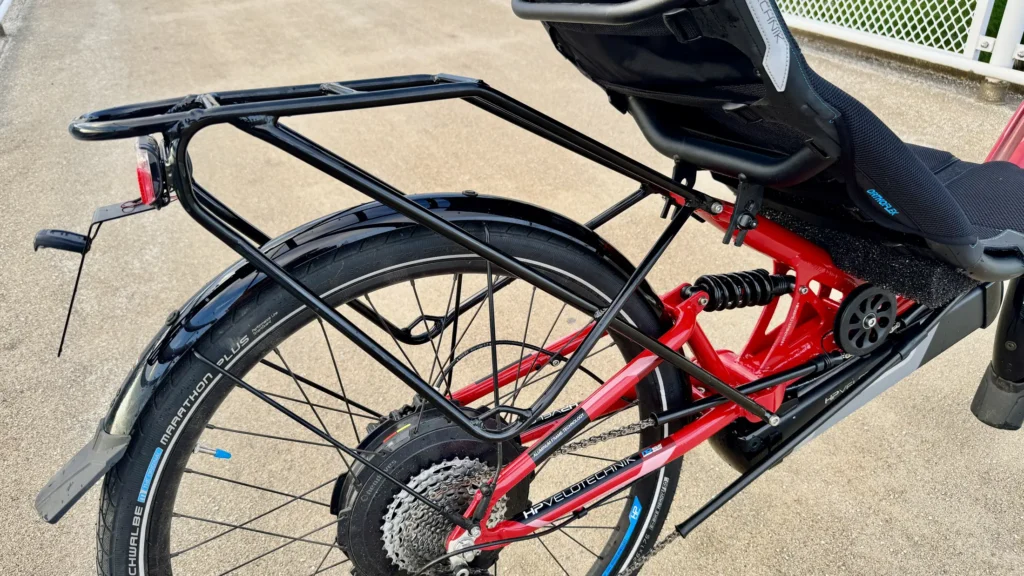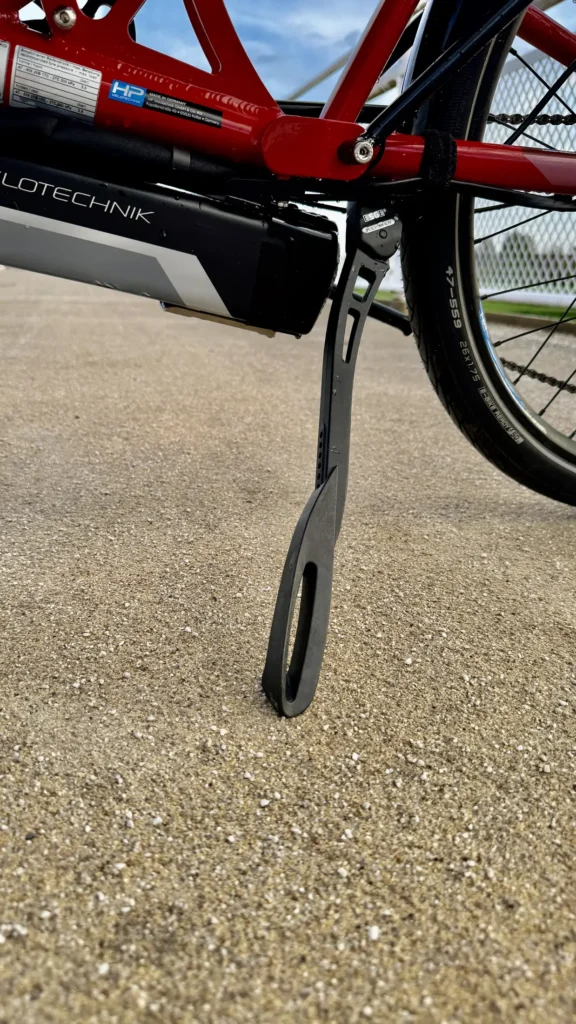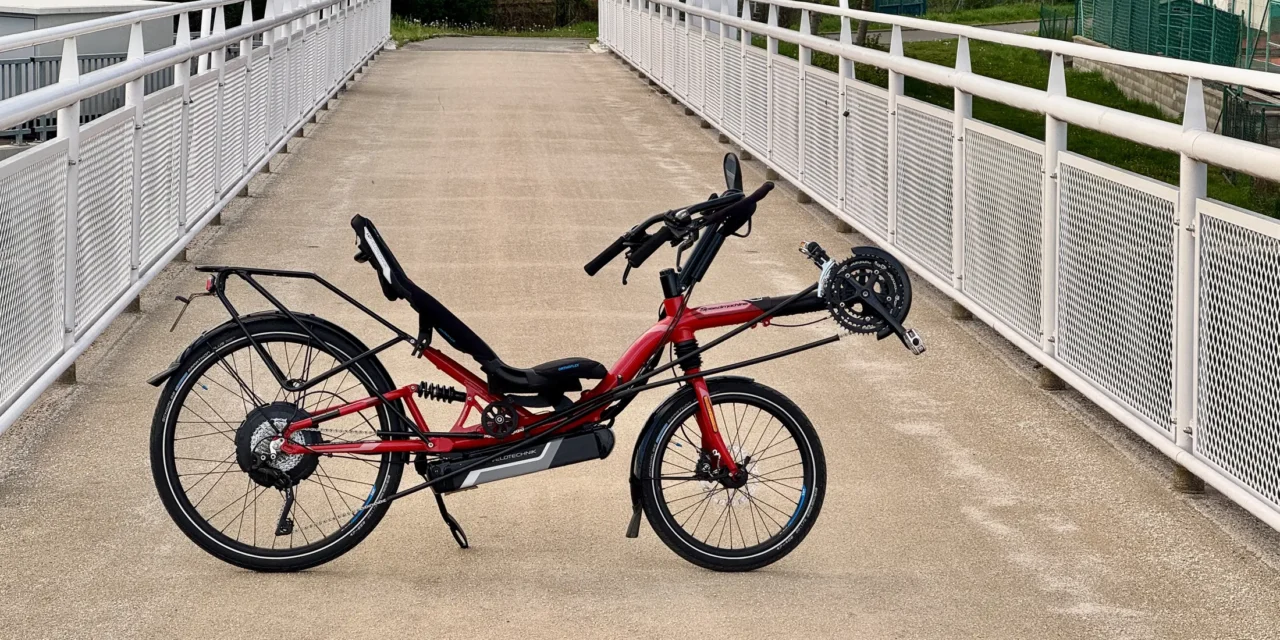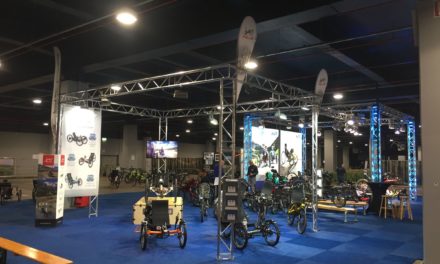There aren’t many electric two-wheel recumbent bikes on the market, especially those that fall into the S-Pedelec category—bikes that can go up to 45 km/h in Europe and 28 mph in the US. Among the major, well-known recumbent brands, the HP Velotechnik Speedmachine S-Pedelec is actually the only available option. So what’s it like to ride? What are the benefits of a high-speed electric recumbent, and what challenges does the extra speed bring?
You won’t find traditional recumbent reviews on RECUMBENT.news. There’s a simple reason for that – I could easily be accused of being biased (if you’re curious why, check out the “About” section). So I won’t attempt a full review of the Speedmachine S-Pedelec. Instead, I’d like to focus on what it’s like to live with such a bike and how it fits into everyday life. And there’s a lot to talk about.
Background
The Speedmachine is a model that HP Velotechnik has offered for many years and is essentially their fastest model. Though it falls into the low-racer category – with the rider sitting low in a rather reclined position – it is not a race bike. That’s because the rear and optional front suspension take a toll on pedaling efficiency and add extra weight. So it’s more of a fast touring bike – ideal for commuting, quick afternoon or weekend rides, or even multi-day road trips. It can be equipped with racks for two sets of panniers and offers fast travel in complete comfort.
The Most Stable Recumbent Bike
My first memory of the Speedmachine goes back to the early days of my recumbent riding career. It must have been around 2006 during the HPV Cycle Vision races in the Netherlands, held at the Zandvoort circuit. There was a small recumbent exhibition as well and we stayed overnight in one of the pit boxes. During the day there was the “Snail Race” organized in our box – a slow riding contest where the goal was to ride 10 meters / 32 ft as slowly as possible on a two-wheel recumbent.
At night the exhibitors stored a lot of their demo bikes in the box. About five of us started our own version of the snail race, testing one bike at a time. We averaged our times and the winner? The Speedmachine. I joke that it’s the slowest recumbent bike out there, but the truth is, and I really mean it, that the Speedmachine is the most stable one. By far.
The S-Pedelec Challenge
Let’s move on to the electric version – specifically, the fast one. As you may have figured out by now, the Speedmachine is a unique bike that combines both speed and comfort. After the success of their Scorpion S-Pedelec trike, HP Velotechnik decided to create another high-speed model, this time on two wheels. Of their three two-wheeled recumbent models, they chose the Speedmachine. No surprise there—adding an S-Pedelec motor completely transformed the bike’s character.
For many people, e-bikes still feel like cheating, and fast ones even more so – more like motorcycles. But that couldn’t be further from the truth. I see it as a fantastic alternative to the car, especially for daily commuting or trips that would otherwise require a car or public transportation. It may not be the first choice for laid-back weekend rides, but it still has its fans. For example, well-known California recumbent dealer Zach Kaplan often uses S-Pedelecs for brevets, centuries, and double centuries – non-competitive 100- or 200-mile events.
Commuting to Work
I used the HP Velotechnik Speedmachine S-Pedelec to commute to work – 12.4 miles (20 km) each way. Although many people think I’m a cycling fanatic who rides thousands of miles a year, that’s not really the case. I work long hours and have family responsibilities, so I usually combine train rides with a Tern folding bike (which I can take on the train for free). I ride the full distance by bike about 20 or 30 times a year only. And sometimes, if I am in hurry, I need to take a car.
For many, commuting by bike is a peaceful way to start the day or clear their heads in the evening. Not for me. On my way to work, I’m often mentally preparing for the work to come or am in hurry for meetings. Any delays stress me out. On the way back, I sometimes enjoy the ride, but usually end up battling headwinds or being late for some family stuff – every pedal stroke adds to the pressure. I use a non-electric multi-purpose recumbent, which I use not only for commuting, but also for touring and family rides.
As mentioned, sometimes I also drive a car, which is the fastest option. By car, it takes me 20 minutes door to door, wind or no wind. The train takes about 40 minutes, and biking takes about an hour, plus additional time for showering and changing clothes because I arrive sweaty. A standard EU legal e-bike (limited to 25 km/h / 16 mph) doesn’t help much – it’s no faster than a regular bike and just as sweaty.
Then I got on the S-Pedelec and everything changed. I made it home in 40 minutes, and the headwind didn’t matter. I could ride comfortably without breaking a sweat, or with some additional effort if I wanted the exercise. Suddenly, I had the same commute time as taking the train, but without having to worry about schedules. In addition, there was, of course, the positive psychological effect of cycling, peppered with the excitement of going fast. I found myself riding much more often-almost daily. I only took the train in really bad weather, and even the car became almost obsolete. Compared to the train, I could also leave whenever I wanted, which saved a lot of time.
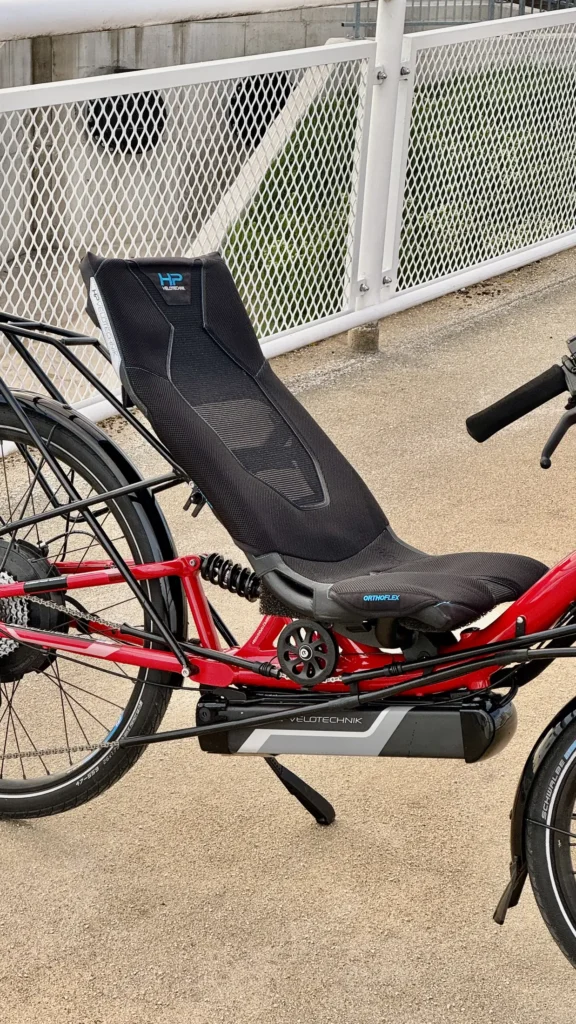
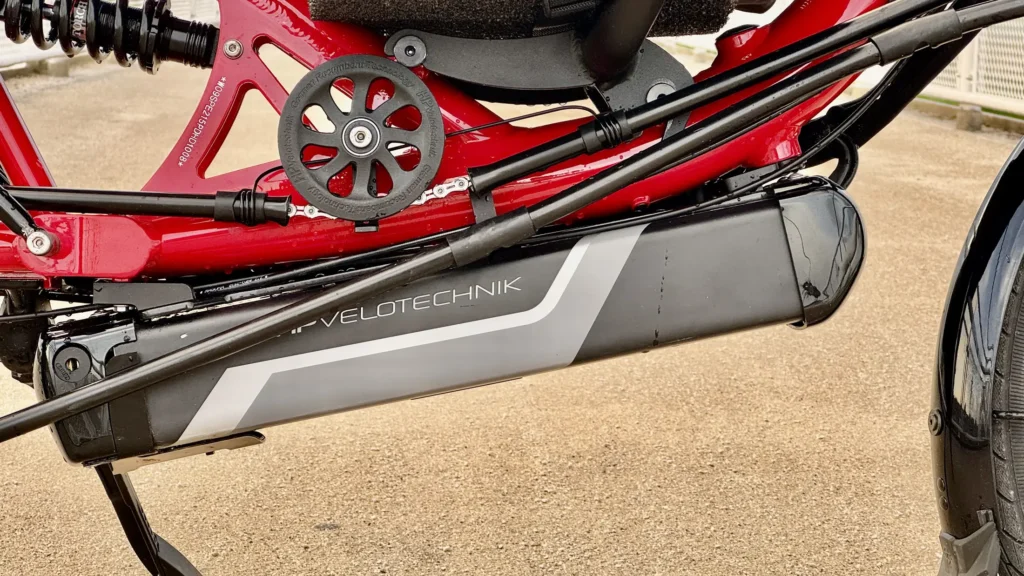

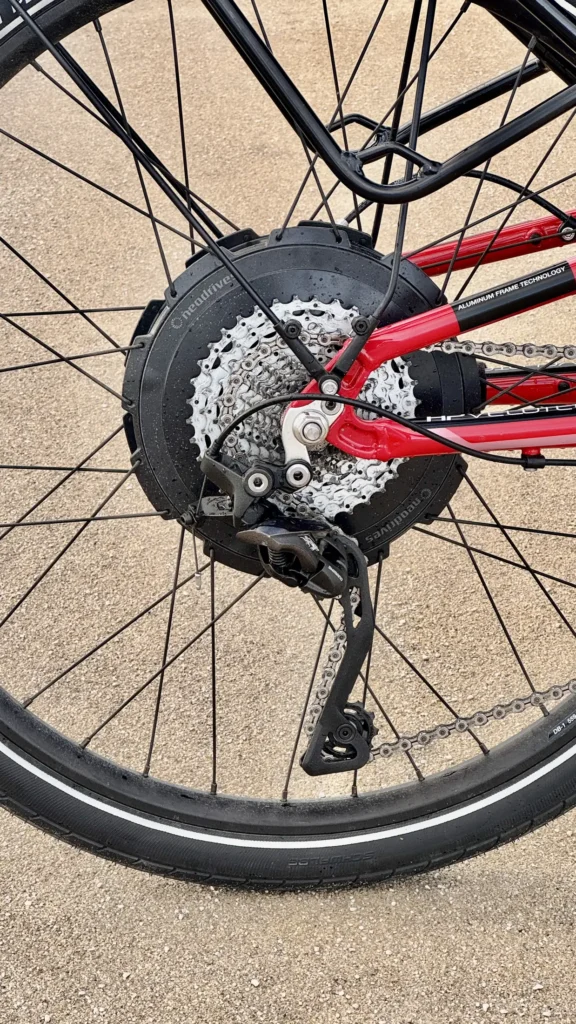
Bike Trails
About a third of my commute is on bike trails, the rest on quiet roads with minimal traffic. In my experience, back roads are where the Speedmachine S pedelec shines. On bike trails – at least where I live – many turns feel too tight at speeds around 40 km/h (25 mph). When trying to use the bike trail, I had to constantly brake and accelerate, which lowered my average speed and made the ride less enjoyable. There are also obstacles designed for slower bikes, like narrow bridges, car barriers, or gravel sections. Roads are simply better suited for higher speeds of this bike. And then there’s the legal thing, but more on that later.
Key Components of the Speedmachine S-Pedelec
The bike’s components were a big deal to me. Or better to say components and accessories. Sure, the Speedmachine S-Pedelec has a Neodrives Z20 RS motor with up to 1000 watts of power, but that motor also allows for comfort like never before. Even just 10 years ago, the Speedmachine was a fast touring bike-almost a racer-and great for fast commuting for somewhat longer distances. But back then, that meant skinny tires, minimal fenders, thinking twice about a need to have a kickstand, or whether to take just one pannier or two. All that to save weight and reduce drag.
Now? With the S-Pedelec engine, you can afford maximum comfort and full functionality. Take the wide, puncture-resistant Schwalbe Marathon Plus tires, comfortable Ergo Mesh Seat, full fenders, solid kickstand, lights connected to the main battery, and full suspension. Add Magura hydraulic disc brakes and a 3×10 drivetrain, and you’ve got something that only a few years ago was only dreamed of on a commuter bike. You can simply have really functional, durable and very comfortable bike with a sporty feeling.
Range
I never tested the total range, but those flat 40 km (25 miles) I rode daily, mostly with the assistance set at 3 out of 5, was easily covered by the battery. HP Velotechnik lists the range of the 651 Wh battery (mounted under the frame) as up to 60 km / 37 miles. That’s not much, but you pay for speed. You can squeeze out more miles by using lower assist levels.
Above-mentioned Zach Kaplan from Zach Kaplan Cycles had a great experience with this bike during the 2023 Davis Double Century, a 311 km (193-mile) ride with 2754 m (9035 ft) of elevation gain. He used four 651 Wh batteries and shared a detailed ride report, including these quotes:
“Used assist level 1 on the flats and level 2 on the climbs to conserve power. The first battery went to zero at 84.2 km (52.3 miles).”
“There was no point in being overly conservative after Guinda, so I stuck to assist level 2 or higher. On the shoulder-less, high-traffic section of State Highway 16 past Cache Creek Casino, I switched to level 3 and held 45 km/h (28 mph) to minimize speed differences.”
“I arrived back at the Davis Veterans Memorial Center 12:11:19 after starting, with 10:19:53 of rolling time and an average speed of 30.1 km/h (18.7 mph). I had 25% charge left in the 4th battery—next time, I’ll use more power on the climbs.”
You can check out Zach’s full ride on Strava here.
Complications
However, we must also mention the complications that riding on S-Pedelec or Class 3 bikes brings. The HP Velotechnik Speedmachine S-Pedelec stands out with its powerful motor assistance up to 45 km/h (28 mph), making it a fast and efficient option for commuting and sporty touring. However, this performance places it under stricter regulations than regular pedelecs, both in the European Union and the United States.
In the EU, S-Pedelecs are legally classified as mopeds under the L1e-B category. This means they require full EU type approval, liability insurance, and registration with a license plate. Riders must wear a certified moped helmet, hold at least an AM moped license, and in most cases, are not allowed to use cycle paths unless explicitly permitted by local rules. This legal status brings the S-Pedelec closer to a small motor vehicle than a bicycle, introducing significant administrative steps before one can legally ride it on public roads.
In the United States, the same bike typically falls into the Class 3 e-bike category. These bikes offer pedal assistance up to 28 mph without a throttle. Most states require riders to be at least 16 years old, and some mandate helmet use, especially for younger riders. Unlike in the EU, there’s no need for insurance, registration, or a driver’s license. However, Class 3 e-bikes are often restricted from multi-use paths and recreational trails, which limits where they can be ridden.
It should be added here that HP Velotechnik is trying to push, together with other German bike brands, to allow S-Pedelec bikes to be used on bike paths. You can read about their efforts, for example, here (article in German only).
Conclusion
I spent several months with the HP Velotechnik Speedmachine S-Pedelec, and I enjoyed the experience. It’s an excellent machine for commuting, but I can easily see it being used for much more than just commuting to and from work.
Read more about the Speedmachine S-Pedelec on HP Velotechnik’s website.
